Mastering Koshari Recipes for Consistent Texture and Flavor
47 min read Achieve perfect koshari every time with precise techniques for grains, pasta, sauce, and onions—timing, seasoning, and texture tips for reliably balanced flavor and crunch. October 05, 2025 21:08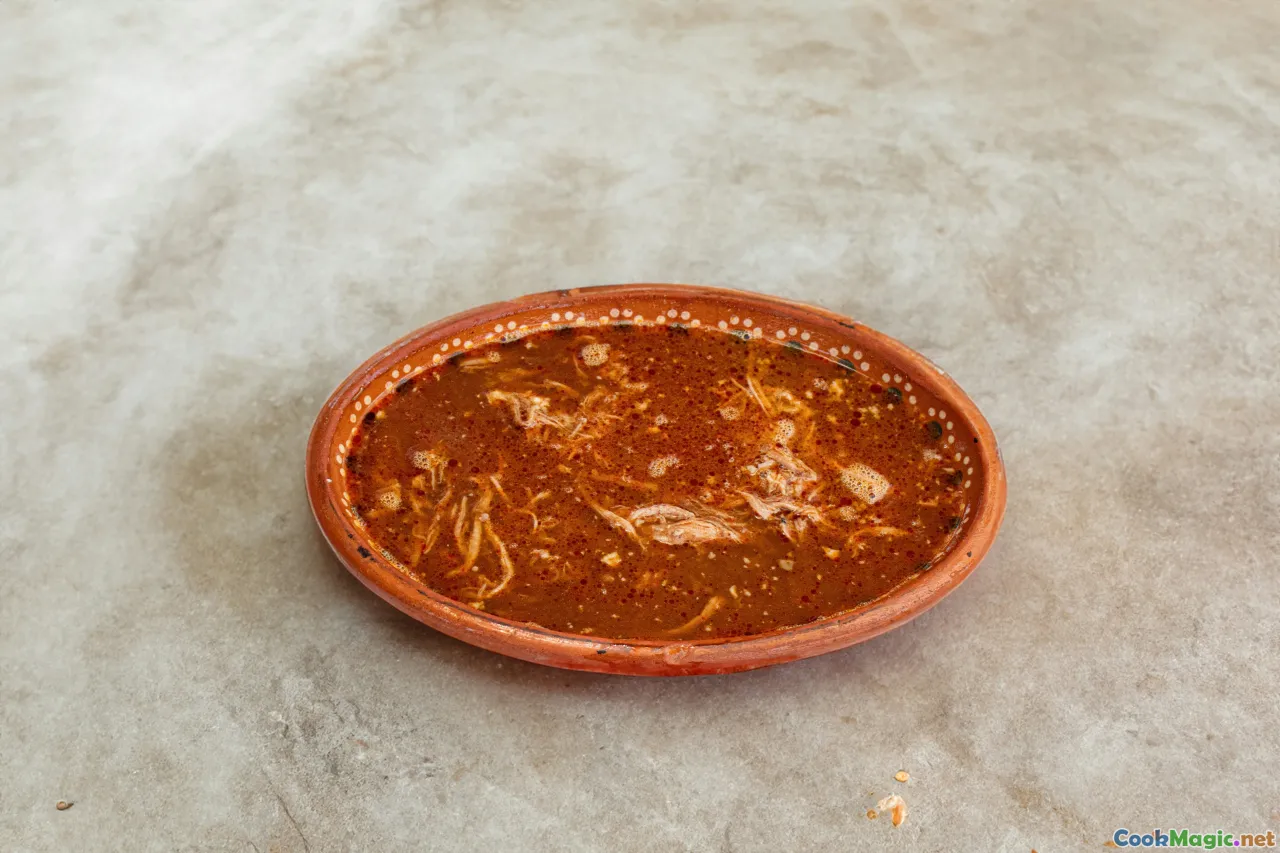
Cairo taught me that some dishes don’t whisper; they ring out like traffic horns, prayer calls, and laughter bouncing off limestone walls. Koshari is one of those dishes. The first time I ate it in Downtown Cairo, the server in a blue apron tossed pasta, rice, and lentils into a bowl with a flick of his wrist so confident it felt like choreography. A cloud of cumin and vinegar rose up as he laced the bowl with a garlicky red sauce. Then came a snowfall of chickpeas and a blizzard of onions fried to a deep, chestnut crunch. The first bite was a carnival: steam, tang, sweet char, and a bass line of earthiness. The second bite tasted like purpose. The third told me I would spend years trying to make it exactly right at home.
Koshari might look like a tangle of pantry staples, but attaining consistent texture and flavor requires the precision of a pastry chef and the instincts of a street vendor. When you master it, you own a bowl with the gravity of a family tradition. This is a guide for cooks who want to take koshari from delicious to dependable—every grain, noodle, and onion crisp dialed in.
The Anatomy of Koshari: A Texture Map

When I teach koshari workshops, I sketch a map, not a recipe. The dish is a layered architecture built on tension and relief:
- Grain base: Egyptian short-grain rice cooked loose, with vermicelli for toasted, nutty lift.
- Legume bass line: brown or green lentils cooked to hold their shape under gentle pressure.
- Pasta cushion: short pasta—elbows, ditalini, or trofie—parboiled and held slightly under.
- Chickpea confetti: creamy yet intact, warm and salted.
- Crispy crown: onions sliced thin and fried to a lacquered crunch that shatters.
- Red sauce: tomato-forward, gently sweet, cut with garlic and vinegar.
- Dakka: a pourable condiment of garlic, cumin, coriander, lime, and vinegar, bright as cymbals.
- Shatta: a fiery chile sauce or oil that hums in the corners of your mouth.
Perfect koshari tastes like balance even though nothing about it is balanced individually. The rice is quiet so the onions can shout. The lentils’ chew gives the pasta’s softness meaning. The vinegar lifts the tomatoes so sweetness doesn’t turn cloying. Consistency is won by making each layer sing a clear note and by knowing where they should meet in the bowl.
A Short Journey Through Koshari's History

Koshari’s origin story is a mosaic of migrations. Its closest relative is likely Indian khichdi—a soft dish of rice and lentils—that sailed into Egypt with British soldiers who needed something filling and familiar. Egyptians, ingenious with identity, made it their own. They kept the legume and grain but added macaroni from Italy’s footprint in the Mediterranean, infused it with the Levant’s devotion to fried onions, and finished it with the acidic bite beloved in Egyptian kitchens. By the early 20th century, koshari vendors fed factory workers and students from big metal bowls at street corners.
There is a photo I love from the 1950s: a young man in a crisp white shirt standing outside a kiosk, holding a tin bowl of koshari with the same tenderness you’d offer a kitten. Today, you find koshari everywhere—stainless-steel counters in Imbaba, neon-lit institutions in Downtown Cairo. Abou Tarek, with its multistory glow on Marouf Street, has become a pilgrimage. On my last visit, around 10:30 p.m., the servers were still flying, shouting orders while steam fogged the windows and the smell of onion oil clung to my scarf.
Quieter but no less revered is Koshary El Tahrir, which opened in the 1950s and now has branches across the city; I once watched a grandmother there instruct a young cashier to pack extra onions because, as she said, onions carry the memory of the meal. She’s right. The fried onions are the stamp of the cook.
Ratios That Never Fail

Consistency comes from ratios, not rules of thumb. Start with this base for 6 generous servings:
- Rice: 300 g (1.5 cups) Egyptian short-grain
- Vermicelli: 75 g (1.25 cups broken)
- Brown lentils: 250 g (1.25 cups), sorted and rinsed
- Pasta: 350 g (about 12 oz) small elbows or ditalini
- Chickpeas: 250 g dried (or 2 cans, drained and rinsed)
- Onions: 800 g (about 4 large), thinly sliced
- Neutral frying oil: 750 ml (for onions and frying)
- Tomato sauce yield: about 1.2 liters
- Dakka: about 300 ml
- Shatta: 150–200 ml
Seasoning ratios to aim for across the bowl:
- Salt: 1.8% by weight of water for boiling pasta and chickpeas; 1.2–1.5% for rice cooking liquid.
- Acid: total 20–30 ml vinegar or lime per serving via sauces (tuned to taste).
- Fat: 10–12% of onion weight when frying (the onions will absorb some, and we will reuse aromatic oil).
These targets create an anchor so even when you swap pasta shapes or adjust rice varieties, the taste stays centered. Write your numbers. Use a scale. No great koshari vendor cooks by hope.
Rice: Fluffy, Separate, and Fragrant

Egyptian short-grain rice has a higher starch content than basmati, which is part of koshari’s cuddle factor. But you want plush, not gummy.
- Wash until the water runs mostly clear. This often takes 4–5 rinses. Each rinse removes surface starch that bakes into glue later.
- Soak 20 minutes in cool water with 1 teaspoon of salt. The salt seasons the grain and strengthens the outer layer.
- Toast the vermicelli in 2 tablespoons of neutral oil until it turns the color of honey. Add a small knob of samna baladi (Egyptian clarified butter) if you want to echo old-school kitchens. The smell should shift from raw cereal to nut brittle.
- Drain the rice and add to the vermicelli. Stir to coat with oil for 30 seconds. You should hear a friendly hiss.
- Add water in a 1:1.25 ratio by volume (for 1.5 cups rice, 1.875 cups water). Add 1 teaspoon salt and a bay leaf. Some cooks add a pinch of cinnamon or mastic; keep it restrained so it doesn’t fight the sauces.
- Bring to a steady simmer, then cover and drop heat to low. Cook 10 minutes, then cut the heat and leave covered 10 more minutes. Do not peek.
- Fluff with a fork and spread on a tray to let steam escape if you’re holding for later assembly.
The vermicelli’s toast infuses the entire rice with the scent of roasted grain. The samna adds a savory echo. You’ll know you nailed it if grains stick in a loose hug but drop apart with a tap of the fork.
Troubleshooting rice texture:
- Mushy: you used too much water or lifted the lid too often. Fix by spreading on a tray to steam off moisture.
- Hard centers: undercooked; add a splash of hot water, re-cover, and rest 5 minutes.
- Gummy clumps: over-stirring at the end; fluff gently and allow to cool uncovered.
Lentils: Earthy Backbone With Bite

Brown lentils are ideal. They should keep their shape but yield under your teeth. The difference between perfection and mush is a few minutes and when you add salt and acid.
- Rinse and pick through 250 g lentils. Optional 30-minute soak if your lentils are old; it evens hydration.
- In a saucepan, combine lentils with 3 times their volume of water, a bay leaf, 1 small onion half, and 1 teaspoon cumin seeds tied in a sachet or loose if you don’t mind flecks.
- Bring to a simmer, skim foam, add 1.5 teaspoons salt early. Early salting keeps skins intact by strengthening cell walls.
- Simmer 18–22 minutes until just tender. You want a slight resistance in the center. Test by biting; the center should not be chalky.
- Drain immediately; spread on a tray if not assembling soon.
Avoid adding acid to the pot; it toughens lentils and prolongs cooking. Once drained, I toss them with a teaspoon of the onion frying oil and a whisper of ground cumin. This keeps them from drying out and layers flavor from the next component back into the dish.
Pasta and Vermicelli: Italian Echoes, Egyptian Soul

Macaroni arrived in Egyptian bowls as the Mediterranean hummed with trade. The pasta you choose should be short and scoopable.
- Use elbows, ditalini, or small shells. Their curves hold sauce without overshadowing the rice and lentils.
- Salt the water to 1.8%: that’s 18 g per liter. Taste the water; it should be as salty as tears.
- Boil the pasta 1 minute shy of package al dente time. It will finish with carryover heat and in the bowl.
- Drain and toss with 1 tablespoon onion oil to prevent sticking and to deepen flavor.
If you add spaghetti broken into 2-inch sticks, cook it separately a minute less than elbows; thin strands overcook fast. Vermicelli belongs with rice, not as a stand-alone noodle here.
Texture checkpoints:
- The pasta should rebound when pressed, not collapse.
- When you fold it with rice and lentils, the noodles shouldn’t dominate the spoonful visually or texturally.
Chickpeas: Creamy Top-Notes, Not Mealy Mistakes
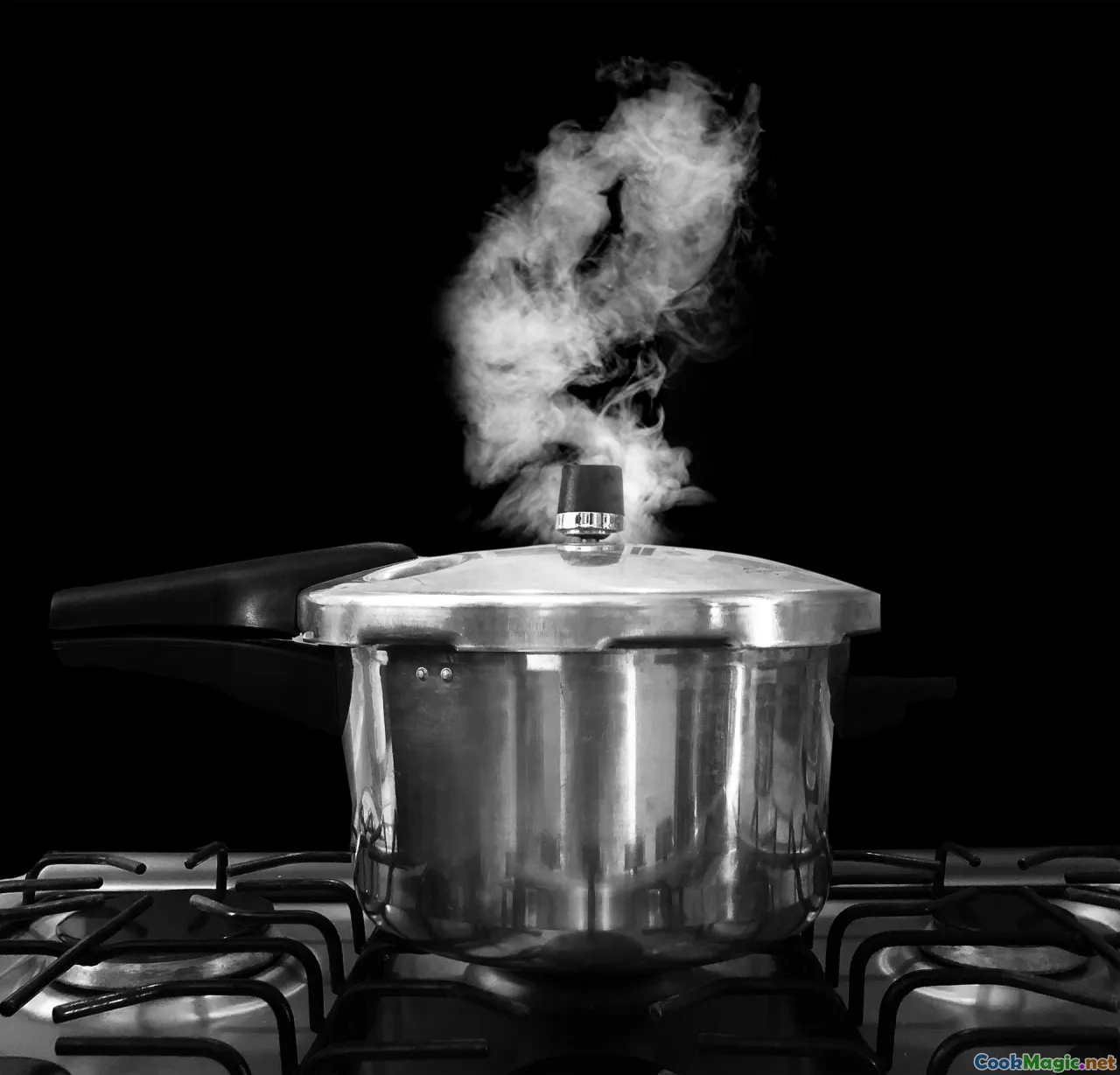
Chickpeas can wreck a bowl if they’re chalky. They’re also easily transcendent when they carry a warm perfume of cumin and oil.
From dry:
- Soak 250 g chickpeas in plenty of water with 1 teaspoon baking soda overnight.
- Rinse, cover with fresh water, and simmer with a halved onion, 2 smashed garlic cloves, and a bay leaf until tender—about 60–75 minutes. Or pressure cook 18–22 minutes natural release.
- Salt after cooking: 1.8% of the cooking water weight if you’re holding them in their liquor; otherwise toss warm with 1 teaspoon fine salt per 250 g cooked chickpeas.
From canned:
- Drain and rinse. Warm gently in a small pot with 2 tablespoons onion oil, 1 teaspoon ground cumin, and a squeeze of lime. This five-minute spa transforms canned chickpeas from utility to intention.
Keep them warm. Cold chickpeas sit on top like marbles.
The Crispy Onion Crown: Engineering Crunch
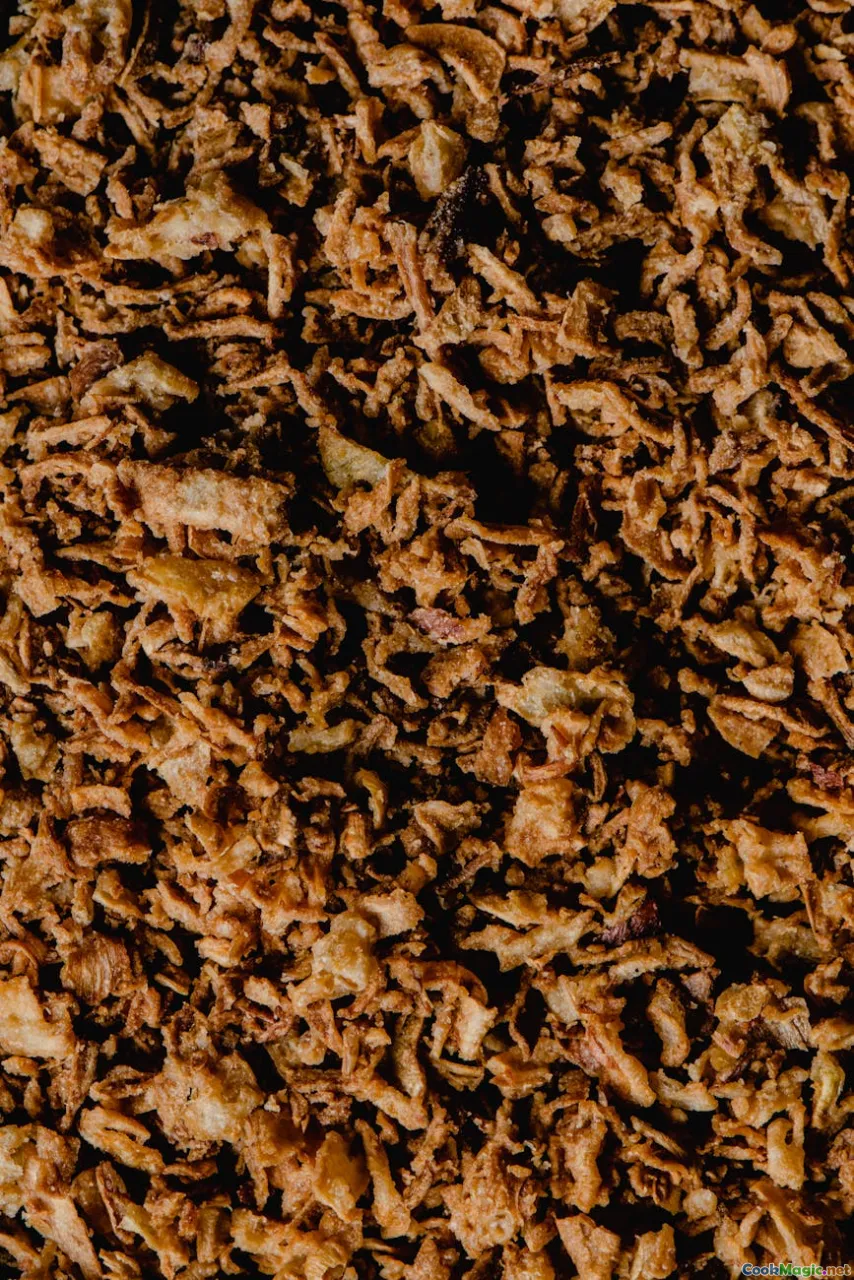
The onions are the house’s signature. I learned my method from a line cook in Shubra who wielded a knife like a tuning fork.
- Use 800 g onions. Peel and slice pole-to-pole 2–3 mm thick. Mandoline for precision.
- Soak in ice water with 1 teaspoon salt for 10 minutes to leach harshness and encourage crispness.
- Drain thoroughly and toss with 2 tablespoons cornstarch or all-purpose flour. Shake off excess in a sieve. This thin coating creates an armor that blisters into ridges.
- Heat 750 ml neutral oil in a wide pot to 160 C. Fry in batches, stirring constantly. Raise heat gradually to 175 C as moisture leaves. The kitchen will smell like sugar turning into music.
- Pull when the onions are a shade lighter than the color you want—they continue to brown off heat. Aim for deep amber, not mahogany. That’s the difference between bitter and bold.
- Drain on a rack set over a sheet pan. Salt while hot with fine salt (about 1% of onion weight). Dust with a pinch of ground cumin if you like an echo of the seeds from the lentils.
- Save the fragrant onion oil; it’s liquid gold for sauces and finishing.
Storage: hold crispy onions at room temperature up to 6 hours in a low (90–95 C) oven with the door cracked to keep them dry. For next-day use, cool completely and store airtight with a silica packet. Recrisp in a low oven.
The Sauces: Tomato, Dakka, and Shatta

Koshari is dressed twice. The bold red tomato sauce sets the stage, while dakka—a garlic-lime-vinegar potion—sharpens the edges. Shatta adds heat.
Tomato sauce (about 1.2 liters):
- Onion oil: 3 tablespoons
- Yellow onion, minced: 1 small
- Garlic, finely grated: 6 cloves
- Tomato paste: 60 g (4 tablespoons)
- Crushed tomatoes: 800 g can
- Water: 400 ml (use chickpea cooking liquid if you have it)
- Sugar: 1–2 teaspoons, to taste
- Cumin, ground: 1 teaspoon
- Coriander, ground: 1 teaspoon
- Aleppo pepper or mild chili flakes: 1 teaspoon
- White vinegar: 60 ml
- Salt: 2 teaspoons, adjust to taste
Method:
- Warm onion oil in a saucepan. Sweat onion with a pinch of salt until translucent.
- Add garlic; cook just until fragrant, 30 seconds.
- Stir in tomato paste; fry until it darkens slightly and smells like concentrated summer.
- Add crushed tomatoes and water. Simmer 20–25 minutes to thicken.
- Season with sugar, cumin, coriander, and chili. Off heat, stir in vinegar and taste. You want a bright, savory, lightly sweet sauce with gentle acidity.
Dakka (about 300 ml):
- Garlic, finely grated: 8 cloves
- Ground cumin: 1.5 teaspoons
- Ground coriander: 1 teaspoon
- Salt: 1.5 teaspoons
- Fresh lime juice: 80 ml
- White or red wine vinegar: 60 ml
- Water: 150 ml
- Optional: pinch of dried mint
Whisk together until cloudy and intense. Adjust salt and acid; it should taste almost too sharp on its own, because it’s meant to lift heavy components.
Shatta (about 150–200 ml):
- Fresh red chilies (Fresno or bird’s eye): 120 g, stems removed
- Garlic: 4 cloves
- Salt: 1 teaspoon
- White vinegar: 60 ml
- Onion oil or olive oil: 80 ml
- Optional: 1 teaspoon smoked paprika
Pulse chilies and garlic with salt. Stir in vinegar and oil. Keep some seeds if you like heat. Let sit 30 minutes; flavors bloom. It should be bright, fiery, and slightly oily so it streaks brilliantly through the bowl.
Pro move: use 1–2 tablespoons of the onion oil in all sauces where oil is called for; it ties the dish together with a toasty depth.
Heat, Acid, Salt, Crunch: The 4-Point Flavor Compass

To keep koshari consistent, taste by quadrants—not just for salt.
- Heat: not only chili heat but temperature. All components should be warm or hot when assembled, except the onions, which can be room temp. Cold pasta dulls flavors.
- Acid: measure acid in milliliters per serving. A good bowl lands around 25–35 ml of combined dakka and shatta plus the vinegar in the tomato sauce. Keep a squeeze bottle to portion consistently.
- Salt: boil pasta and chickpeas in properly salted water; it’s the difference between seasoning outside and inside the ingredient. Finish with a pinch of fine salt on top if needed.
- Crunch: two layers—onion shards and the tiny crisp of toasted vermicelli. If crunch fades, the bowl sags.
Train yourself to assemble a mini bowl for tasting—one spoonful of each component. Adjust sauces before you serve a crowd. Consistency lives in this discipline.
Mise en Place for Service: From Apartment Kitchen to Pop-Up Stall
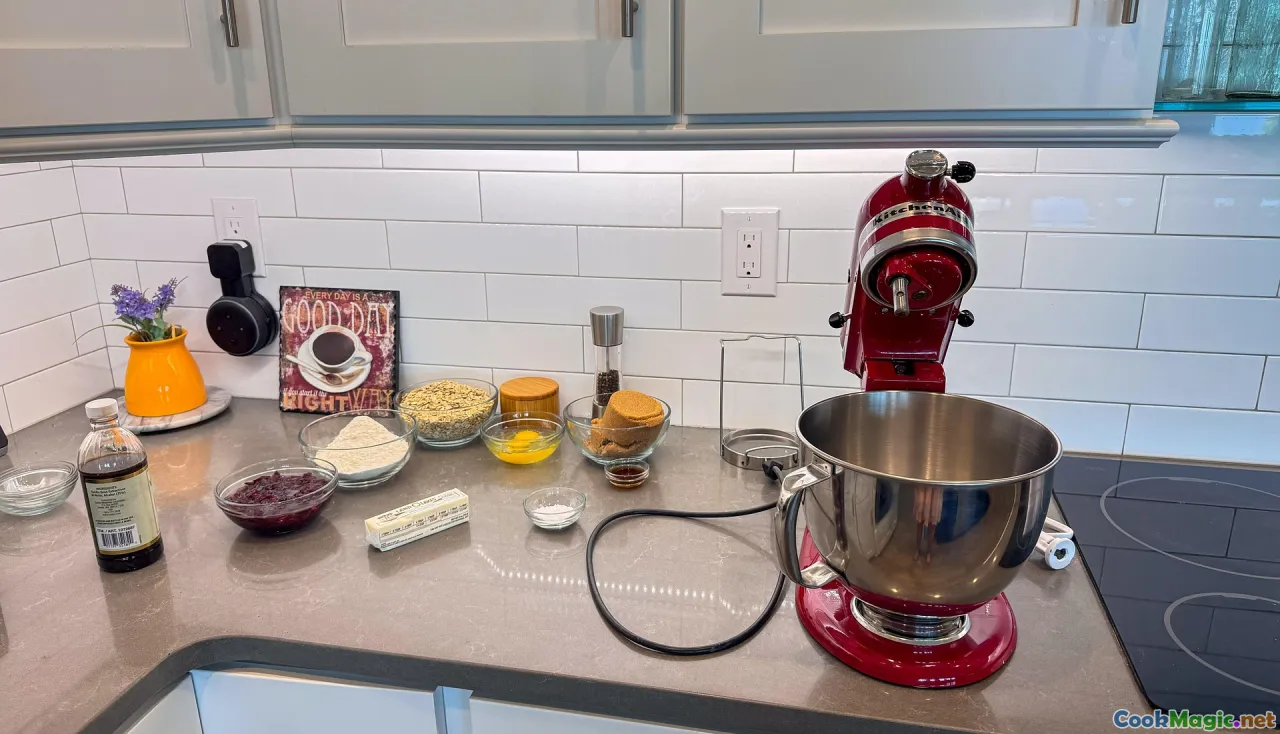
When you watch a koshari line at Abou Tarek, you see a ballet of scoops and pours. Recreate that order at home for rhythm and consistency.
- Hold rice-vermicelli warm in a covered pot or rice cooker on warm setting.
- Lentils in a small pot with a splash of water to keep them supple.
- Pasta in a large bowl lightly oiled; refresh with a splash of hot water and toss before serving.
- Chickpeas warm in their seasoned oil.
- Tomato sauce in a small pot at a simmer; dakka and shatta in squeeze bottles at room temp.
- Onions in an uncovered shallow pan in a barely warm oven.
Assembly sequence:
- Bowl, warm if possible.
- Rice base: 1 rounded cup.
- Pasta and lentils: 1/2 cup each, folded together lightly.
- Tomato sauce: 2–3 ladlefuls, depending on preference.
- Chickpeas: a small scoop—think confetti, not blanket.
- Dakka and shatta: zigzag to taste.
- Onion crown: a generous handful; listen for the tiny rainfall sound when they hit the bowl.
Consistency hack: use the same ladles or measuring cups every time, just like the pros.
Troubleshooting the 9 Common Koshari Pitfalls

- Gummy rice: rinse more, reduce water slightly, and avoid stirring while cooking.
- Lentils falling apart: salt early and avoid acids until after cooking.
- Pasta bland: under-salted water; increase to 18 g per liter.
- Chickpeas chalky: longer soak, baking soda, and cook until tender before salting.
- Onions bitter: oil too hot or fried too dark; pull earlier than you think.
- Tomato sauce dull: under-seasoned or under-simmered; let it reduce and balance with sugar and vinegar.
- Bowl tastes flat: not enough dakka. Up the acid.
- Soggy onions after holding: cool fully and store dry; recrisp in a low oven.
- Inconsistent bowls across servings: lack of portion tools—use designated scoops for each component.
A Day at Abou Tarek and Lessons From the Line

One winter evening in Cairo, I watched the Abou Tarek line move as fast as any ramen bar in Tokyo. A man at the front built bowls like a drummer, his hands a blur: rice with vermicelli, then a soft avalanche of macaroni, a dark scoop of lentils. He twisted his wrist to pour tomato sauce in a spiral. Next to him, another worker flicked chickpeas on top with a small perforated spoon—the same spoon every time. The onions went on last, pinched together like snow.
What I learned there:
- Every component had its own ladle or scoop. Nothing shared. Muscle memory breeds consistency.
- The tomato sauce was thick enough to leave a trail on the ladle. It wasn’t watery; it clung and coated.
- The dakka came from squeeze bottles lined up like organ pipes. The man asked each customer how they took it—more dakka, less shatta—and wrote those preferences in his motions.
- Onions were fried constantly in small batches, not once in the morning. Freshness of crunch mattered more than efficiency.
At the end of the shift, an elderly supervisor tasted a spoonful from the tomato pot, squeezed in a little vinegar, and nodded. It was the only adjustment I saw all night. That tiny correction—acid as punctuation—stuck with me.
Regional Twists Worth Knowing
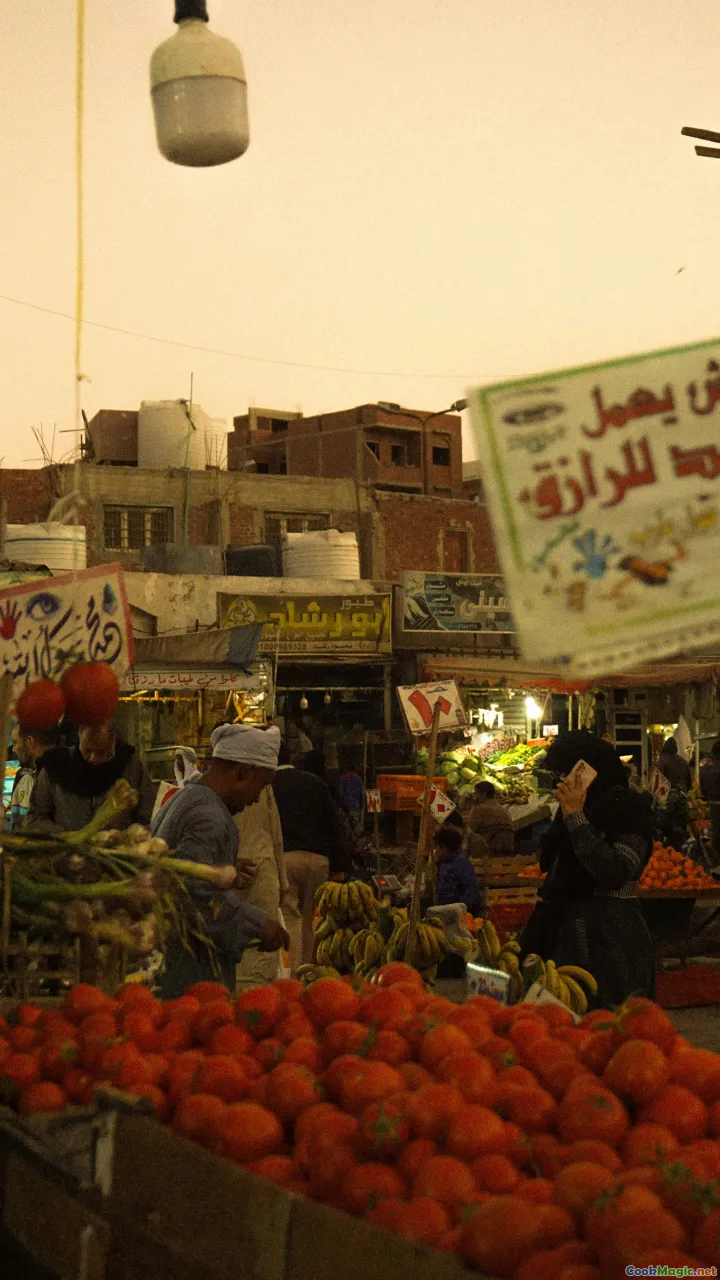
Cairo’s koshari has the spotlight, but it is not the only script.
- Alexandria: tends to favor a looser tomato sauce and sometimes a rice-to-pasta ratio skewed toward pasta. I’ve had bowls near El Raml Station where the dakka ran sharper, with extra lime.
- Upper Egypt: more rice-forward; onions fried darker, lending a mild bitterness that pairs with hotter shatta.
- Home kitchens in Giza: I’ve seen cooks add a whisper of cinnamon to the rice pot and infuse the tomato sauce with a clove. These perfume notes can be lovely if disciplined.
- Contemporary shops like Zooba: sometimes add a touch of smoked chili to shatta or finish with a sprinkle of toasted seeds. Purists protest; I am agnostic if the bowl remains balanced.
Use these as conversation, not commandments. The soul of koshari is hospitality, not rigidity.
Scaling Up: Consistency for a Crowd
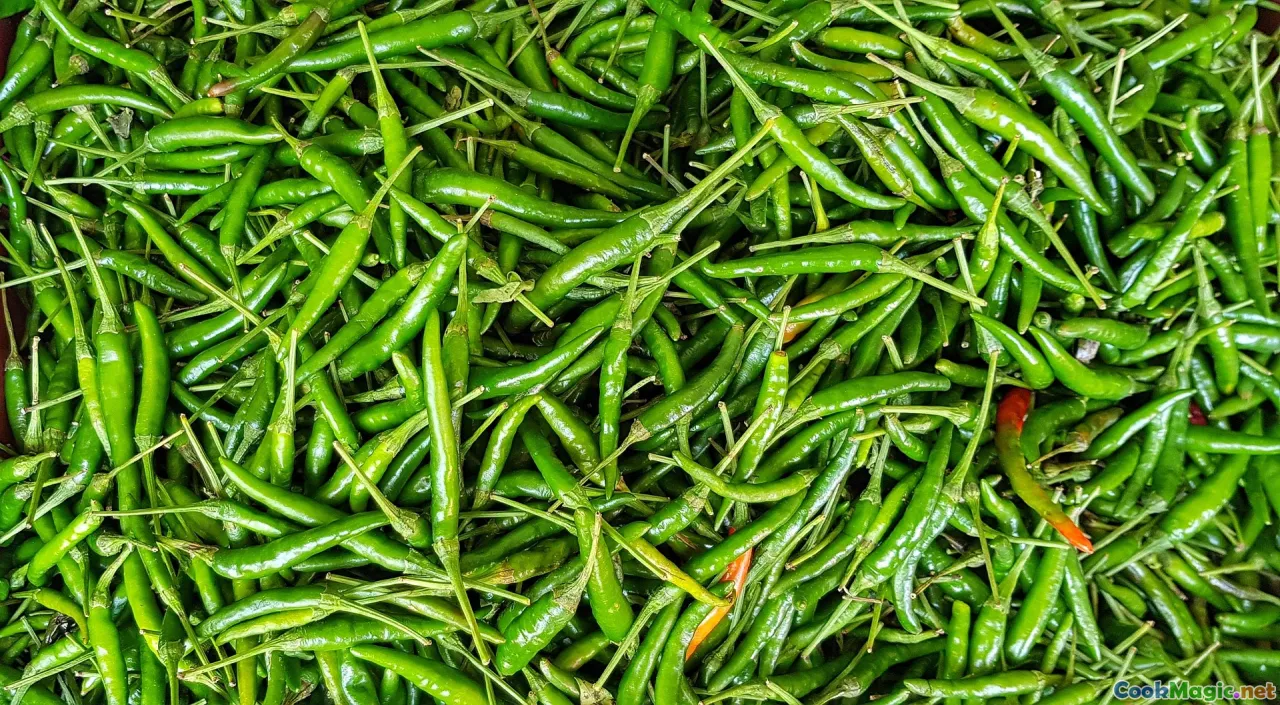
For a pop-up or family gathering, scale by weight and set timers.
- Salt percentage: keep a small chart taped to the wall—18 g per liter for boiling water; 12–15 g per liter for rice liquid.
- Water hardness: hard water lengthens cooking time for legumes and can dull sauce. Add a pinch of baking soda to soften water for chickpeas. Taste and adjust salt accordingly.
- Staging: cook onions in overlapping waves; hold in a low oven. Reheat tomato sauce gently to avoid scorching; stainless-steel pots are forgiving.
- Meal kits: batch rice and pasta, vacuum-seal portions, and retherm by steaming. Fried onions travel separately in breathable containers.
Above all, taste from the service line, not the stove. The bowl assembled on the pass is the truth.
Koshari at Home: A Master Recipe
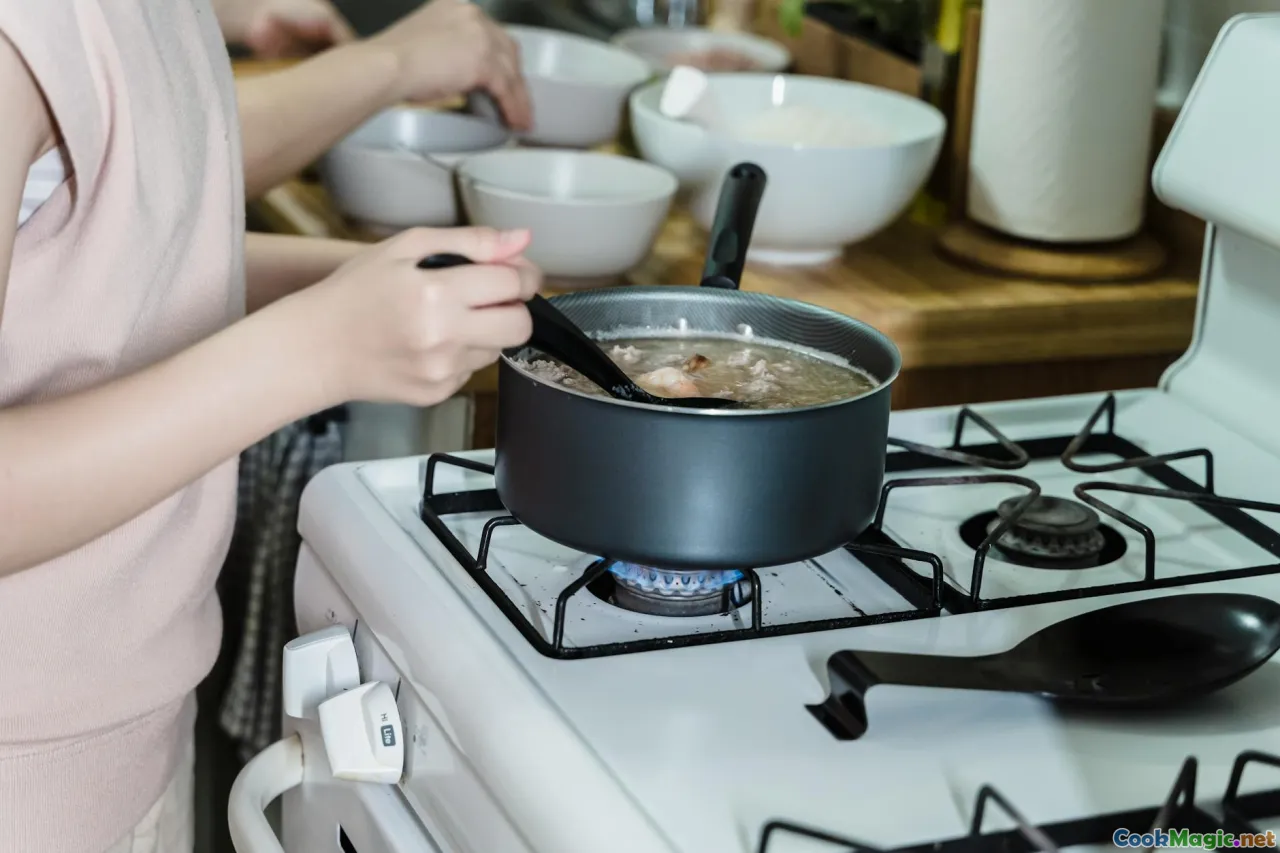
Serves 6–8
Ingredients
-
Rice and vermicelli
- 300 g Egyptian short-grain rice
- 75 g vermicelli, broken
- 2 tablespoons neutral oil + 1 tablespoon samna (optional)
- 1.5 teaspoons salt
- 1 bay leaf
- 470 ml water
-
Lentils
- 250 g brown lentils
- 1 small onion half
- 1 bay leaf
- 1 teaspoon cumin seeds (or 1 teaspoon ground added at the end)
- 1.5 teaspoons salt
-
Pasta
- 350 g small elbows or ditalini
- Salted boiling water (1.8%)
-
Chickpeas
- 250 g dried chickpeas (or 2 cans)
- 1 teaspoon baking soda (if using dried)
- 1 small onion, halved
- 2 garlic cloves
- Salt
-
Onions
- 800 g yellow onions, thinly sliced
- 750 ml neutral oil
- 2 tablespoons cornstarch
- Salt
-
Tomato sauce
- 3 tablespoons onion oil
- 1 small onion, minced
- 6 garlic cloves, grated
- 60 g tomato paste
- 800 g crushed tomatoes
- 400 ml water or chickpea liquor
- 1–2 teaspoons sugar
- 1 teaspoon ground cumin
- 1 teaspoon ground coriander
- 1 teaspoon Aleppo pepper
- 60 ml white vinegar
- Salt to taste
-
Dakka
- 8 garlic cloves, grated
- 1.5 teaspoons ground cumin
- 1 teaspoon ground coriander
- 1.5 teaspoons salt
- 80 ml lime juice
- 60 ml white vinegar
- 150 ml water
-
Shatta
- 120 g fresh red chilies
- 4 garlic cloves
- 1 teaspoon salt
- 60 ml white vinegar
- 80 ml onion oil or olive oil
Method
- Fry the onions first. Soak slices in ice-salt water 10 minutes. Drain thoroughly. Toss with cornstarch. Fry in batches at 160–175 C until deep amber. Salt hot. Reserve the fragrant oil.
- Cook the chickpeas. If using dried, soak overnight with baking soda. Simmer with onion and garlic until tender; salt to taste. If canned, warm with onion oil, cumin, and a squeeze of lime.
- Make the tomato sauce. Sweat minced onion in onion oil. Add garlic, then tomato paste; cook until brick red. Add crushed tomatoes and water; simmer 20–25 minutes. Season with sugar, cumin, coriander, and Aleppo. Off heat, stir in vinegar and adjust salt.
- Cook lentils. Simmer with bay and onion until just tender; salt early. Drain and toss with a teaspoon of onion oil and a pinch of cumin.
- Cook rice and vermicelli. Toast vermicelli in oil and samna to honey color. Add drained rice, coat, then water, salt, and bay. Simmer covered 10 minutes; rest 10 more. Fluff.
- Boil pasta in well-salted water until just shy of al dente. Drain and toss with a tablespoon of onion oil.
- Make dakka by whisking all ingredients until cloudy and aromatic. Make shatta by pulsing chilies and garlic with salt, then stirring in vinegar and oil.
- Assemble. In each warm bowl: rice base, lentils and pasta, a ladle of tomato sauce, a sprinkle of chickpeas, zigzags of dakka and shatta, and a crown of onions. Serve immediately.
Notes for consistency
- Warm everything but the onions. Heat loss dulls flavor.
- Use the same scoop sizes each time.
- Keep extra vinegar at the pass; acidity fades with heat.
- Start lighter with shatta; it blooms as it sits.
Pairings, Leftovers, and Variations
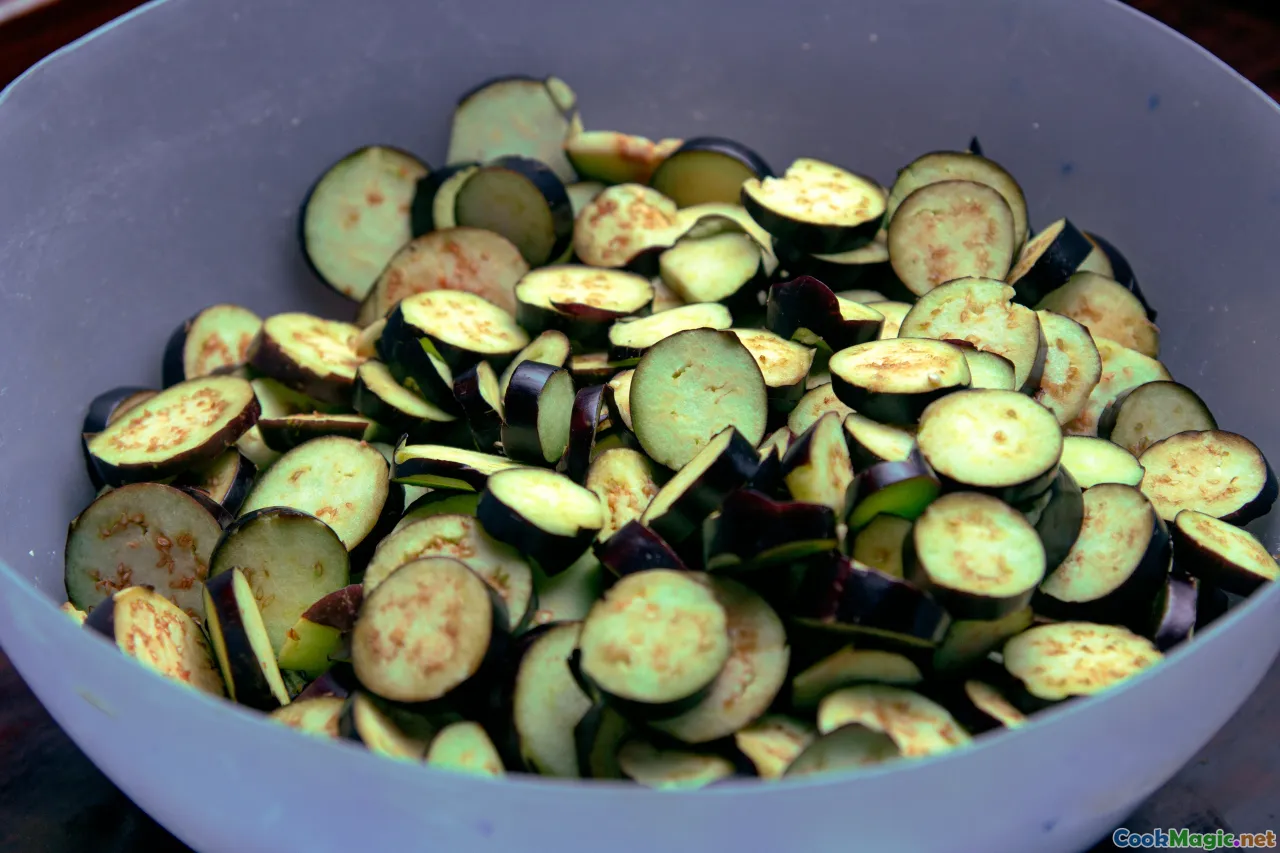
Pairings
- Bitter greens: arugula with lemon and olive oil cuts richness.
- Pickles: turnips tinted magenta, cucumber spears, or carrot sticks. Their crunch keeps the party going.
- Drinks: tamarind or hibiscus (karkadeh) cools the heat and sings along with the vinegar.
Leftovers
- Rice and pasta: rewarm gently with a splash of water or tomato sauce.
- Onions: recrisp in a low oven. If they soften beyond rescue, chop them into tomorrow’s omelet with a pinch of sumac.
- Tomato sauce: freezes beautifully; thin later with a bit of water or stock.
- Chickpeas: mash with garlic and lemon to make a quick hummus, scented with leftover onion oil.
Variations
- Gluten-free: skip pasta and boost rice to 400 g; add toasted buckwheat groats for bite.
- Black lentils: French-style puy can substitute but cook faster and firmer; watch closely.
- Aromatic rice: a 50–50 mix of short-grain and medium-grain basmati gives a slightly more separate bite while keeping the Egyptian soul.
- Onion alternatives: for a lighter crown, try shallots sliced paper-thin and fried quickly; they go from blonde to gold in a blink.
Personal twist
I sometimes warm the dakka by pouring a teaspoon of smoking-hot onion oil into the bowl and whisking fast. The garlic blooms and the kitchen smells like a spice shop caught in a breeze.
The Science of Tender and Crisp: Why These Steps Work

Understanding the why will save your bowl on an off day.
- Rice rinsing removes surface starch that gelatinizes into glue. Salt in the soak lets sodium ions strengthen pectin networks on the rice’s exterior, keeping grains intact.
- Early salting of lentils speeds pectin methylesterase activity and keeps skins taut. Acid would do the opposite, toughening and lengthening cook time.
- Pasta water at 1.8% matches the internal salt of the noodle by the time it hits al dente. Seasoning from the inside beats any saucy correction.
- Onion crisp relies on removing moisture and encouraging Maillard reactions. Cornstarch introduces extra surface starch, which fries into a rigid lattice that stays crisp longer. Controlling oil temperature ensures water boils off before sugars burn.
- Vinegar’s role in sauces is double: it lowers pH to make garlic’s harshness recede while making tomato brightness pop. Adding vinegar off heat preserves volatile aromatics.
This is culinary engineering wearing street clothes.
A Cook’s Story: Finals Week, A Bowl That Hugs Back

During a Cairo winter when I was living in Garden City, I cooked koshari through my finals week. The apartment had a stubborn oven and a hot plate that whined, but the little kitchen kept up. My neighbor, a nurse from Shubra who worked nights, would knock on my door at 2 a.m. for a bowl and leave a bag of pickled turnips in exchange. We didn’t share a language beyond food and small smiles, but I understood her fatigue the way she understood my panic.
When the onions hit the oil that week, the smell turned the apartment into a warm blanket. I kept the dakka strong because adrenaline likes sour; it sharpens your eyes. The chickpeas were soft as a lullaby. Every bowl was a small contract: if I did my part—wash, soak, salt, simmer—koshari did its own, landing with comfort and purpose, night after night. Consistency wasn’t just about taste—it was emotional reliability.
Sensory Checklist Before You Serve

Use this 60-second scan at the pass.
- Look: cords of pasta nestled among rice grains; lentils visible but not dominating; onions a deep amber, not brown-black.
- Touch: pick up a strand of vermicelli and crush between fingers—it should snap; press pasta gently—bouncy.
- Smell: cumin’s warmth, tomato’s summer, garlic’s bite softened by vinegar, a whiff of toasty onion oil.
- Taste: one spoonful with all components. Ask—do I crave another bite? If not, it needs acid or salt. If your lips feel buzzy, shatta is doing its job. If you feel bogged down, add dakka.
A Comparison: Koshari vs. Mujadara vs. Khichdi

These three dishes hold hands across cultures, and understanding their differences sharpens your technique.
- Koshari: layered, textural, acid-forward. Requires separate cooking of components for contrast.
- Mujadara: rice and lentils cooked together, onions mixed in or piled on; gentler acidity, often a lemony salad on the side.
- Khichdi: rice and lentils cooked until soft and porridge-like; comfort food minimalism. Tempering with spices in ghee adds fragrance.
If you crave more harmony and less contrast, you may be cooking toward mujadara. If you want a hug in a spoon, you might be craving khichdi. If you want street noise in a bowl, that’s koshari.
Fine-Tuning Flavor With Small Moves
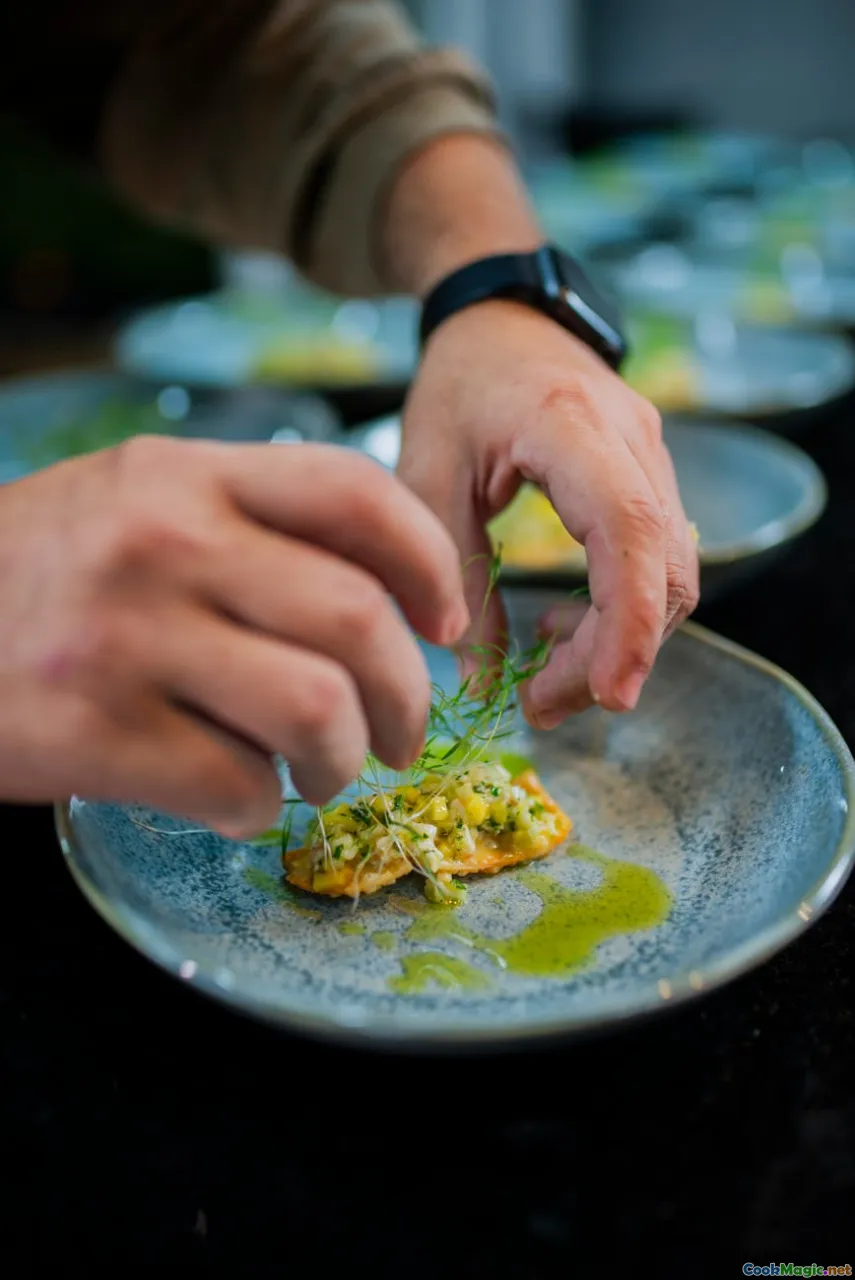
- Bloom spices in oil: toast cumin and coriander in a teaspoon of onion oil before stirring into the tomato sauce for a deeper middle.
- Sweetness control: if tomatoes taste sharp and green, a half-teaspoon of sugar softens edges without making the sauce candy.
- Layered acid: a final splash of dakka tableside makes the first bite sing and the last bite as bright as the first.
- Salt in phases: season each component lightly, then finalize at assembly with sauce and a pinch of salt on top if needed.
- Aroma oil: drizzle a teaspoon of warm onion oil on the finished bowl. The scent cues the palate before the fork arrives.
What To Do When Ingredients Aren’t Ideal

- No Egyptian rice: use Calrose or another medium-grain. Reduce water slightly compared to basmati.
- Old lentils: soak longer and start with hot water to jump-start cooking. Salt early.
- Watery tomatoes: simmer longer; add a tablespoon of tomato paste for body.
- No fresh chilies: use a mixture of red pepper flakes and a smoky harissa; thin with vinegar.
- Limited oil: fry onions in smaller batches to keep temperature stable; consider oven-frying on a sheet pan at 180 C with a light coating of oil and a watchful eye (not traditional but works in a pinch).
Timing Roadmap: The 90-Minute Plan

- Minute 0: Start chickpeas warming; if from dry, have them cooked ahead. Slice onions; start frying.
- Minute 10: Begin tomato sauce; it can simmer while you work.
- Minute 20: Put lentils on to simmer.
- Minute 30: Start rice and vermicelli.
- Minute 40: Boil pasta water.
- Minute 50: Drain lentils; toss with a teaspoon of onion oil.
- Minute 55: Cook pasta.
- Minute 65: Finish sauces; taste and tweak acid/salt.
- Minute 70: Organize mise en place; warm bowls if possible.
- Minute 75: Assemble test bowl; adjust.
- Minute 80–90: Serve.
This rhythm minimizes dead time and keeps all components aligned on temperature and texture.
Why Koshari Feels Like Home, Even If You’re Not From Cairo

Koshari is a dish of welcome. It uses humble ingredients but insists they be treated with care. It asks you to respect time and texture. It lets you season your own bowl at the table, which is another way of saying your preferences matter here. In a world where recipes sometimes tell you to hush and obey, koshari invites you to speak back with vinegar and chili.
When I think of the Downtown Cairo bowl that started my obsession, I remember the steam fogging the glass and the servers’ hands moving like practiced musicians. The onions crackled when they hit the counter, and the city’s hum traced the edges of the meal. What I love most is that I can recreate that feeling in my own kitchen—the hiss of vermicelli toasting, the tang of dakka stealing into the air, the clatter of bowls. This is the mastery we chase: not just repeatable technique, but repeatable comfort.
Keep your scale nearby. Keep your squeeze bottles filled. Taste often. Listen to the sound onions make when they reach the right color. And because every cook deserves a ritual, take the first spoonful standing over the pot, eyes closed, like you are catching a piece of Cairo in your hands. Then serve the rest, generous with onions, confident in your ratios, knowing that the symphony in the bowl will play true, again and again.









